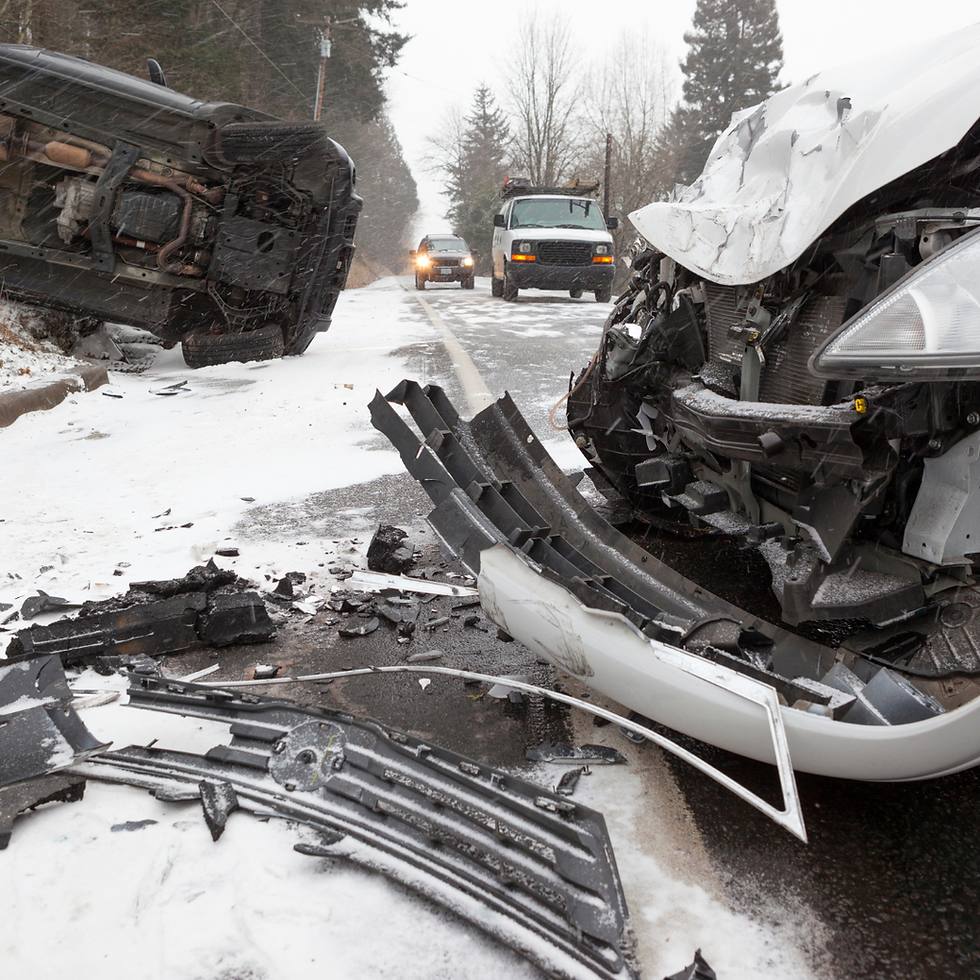Deer-Season Crash Guide for Virginia: All You Need to Know About Deer Car Wrecks
- Scott Andrews
- Oct 22
- 4 min read
Evidence, comprehensive coverage, and repair pitfalls—what to do after a deer strike on US-220/58 and beyond.

First things first: safety + quick checklist for Deer Car Wrecks
Move to safety (shoulder or a nearby lot), hazards on; don’t approach an injured deer.
Call 911 if there are injuries, roadway hazards, or significant damage.
Document
Photos/video of the scene, deer/hair transfer (if safe), road, skid marks, airbags, fluids.
Close-ups of damage (grille, hood, windshield, undercarriage).
Dashcam footage download if you have one.
Witnesses: get names/phone numbers.
Police report: ask how to obtain the FR300/incident number.
Tow: pick the destination (your trusted shop) to avoid storage fees at an unknown yard.
Medical check: even low-speed deer impacts can cause whiplash or glass cuts—get evaluated.
Tip: Make a quick voice memo while it’s fresh: time, location (mm marker or landmark), speed, which direction the deer ran from, and weather/lighting. Small details defeat later “doubt.”
Insurance 101: comprehensive vs. collision (and why it matters)
Most policies treat hitting an animal as comprehensive, not collision.
Deductible is often lower than collision.
No surcharge in many carriers for a single comp claim (varies—ask).
If you swerved and struck a guardrail/tree/another car (no animal contact), many carriers call that collision.
Uninsured Motorist (UM) isn’t for deer strikes—but it may apply if you were forced off the road by an unidentified vehicle (“miss-and-run”) and you meet strict proof rules.
Rental coverage: check daily limits and max days; deer repairs often need glass, body, and sensor calibrations—timelines stretch.
Glass coverage: windshield-only claims can be separate with $0 deductible on some policies.
Action step: Before a claim, open your Declarations Page in your insurer app: look for Comprehensive deductible, Rental reimbursement, Towing, Gap coverage.
How to file (and what to say)
Keep it factual and simple: “I struck a deer that entered the roadway.”
Provide photos/video and the report number.
Ask the adjuster to note sensor/ADAS concerns (radar behind bumper, camera in windshield) that require calibration.
Do NOT volunteer guesswork (“I might’ve been texting,” “I didn’t see it”), and don’t speculate on speed or distance beyond what you know.
Repair pitfalls to avoid (read this before you sign)
1) Shop choice & estimates
You can use your shop; you don’t have to use the “preferred network.”
Get a written estimate with line items for OEM vs. aftermarket vs. recycled (LKQ) parts.
2) OEM parts & ADAS calibrations
Modern vehicles hide radar/cameras behind grilles, bumpers, and windshields.
Ensure your estimate includes OEM-required calibrations (scan, program, dynamic/static calibration) and road tests.
Ask whether the shop uses target boards/factory procedures and provides calibration printouts.
3) Supplements
Deer car wrecks and hits often reveal hidden support, condenser, or frame damage once disassembled.
Make sure the shop will file supplements and the carrier will revisit the estimate (not push you to accept unsafe shortcuts).
4) Total loss valuations
If repair costs + salvage value exceed thresholds, carrier may total.
Verify options/mileage/condition on the valuation; missing options can undervalue your car. Provide window stickers, service records, and comparable listings.
5) Storage & tow fees
Charges stack quickly at tow yards. Move the vehicle to your chosen shop fast and keep receipts.
6) Diminished value?
Third-party claims (someone else at fault) may allow diminished value.
Deer (comp) claims usually do not pay DV under your own policy.
Evidence that strengthens Southside VA claims
Location markers: US-220/58 mile markers, intersecting road names.
Time of day: dawn/dusk spikes help credibility.
Multiple deer: note if a second deer followed the first—common pattern.
Weather/leaf cover: wet leaves and glare matter; photograph them.
Cell data: if an adjuster questions attention, phone logs can rebut distraction claims (talk to counsel first).
Map pin: drop a pin on your phone and save it—helps later.
Health & lost time: don’t skip this part
ER/Urgent Care if there’s neck, head, or glass-related injury.
Tell providers it was a motor vehicle crash (coding matters for billing).
Keep a pain and activity log; soft-tissue symptoms can bloom 24–48 hours later.
Save work notes for missed shifts or light duty.
FAQ
Will my rates go up? Often not for a single comprehensive claim, but underwriting varies. Ask your agent.
Can I keep the rental until all back-ordered parts arrive?Only up to your policy limits. Ask the shop/insurer about parts ETA early and consider temporary alternatives.
Do I need to bring the deer tag/hair?No—but clear photos of hair transfer, broken plastic, and roadway debris help confirm the event.
What if a swerving driver caused me to hit the deer?That becomes fact-intensive. Save dashcam/witness info and talk to counsel—UM “miss-and-run” claims have strict rules.
Quick glove-box list
Vehicle & scene photos (all angles, close-ups)
Witness names/phones
Police/incident number
Tow destination you choose
Insurance dec page screenshot
Notes: time, mile marker, direction, weather/lighting
Bottom line
Deer strikes are common across Martinsville, Henry County, and Southside VA, and most are comprehensive claims—if you document them properly. Strong evidence, the right repair plan (with calibrations), and smart communication keep you safe, reduce out-of-pocket costs, and get you back on the road sooner.
Injured or facing a messy claim? Charles M. Aaron Attorneys at Law helps Southside Virginians navigate post-crash injuries, tricky insurance questions, and total-loss disputes. Reach out for a free, no-pressure case review—we’ll walk you through next steps and timelines.
This article is general information, not legal advice. Policies and facts vary—talk with an attorney about your situation.




Comments